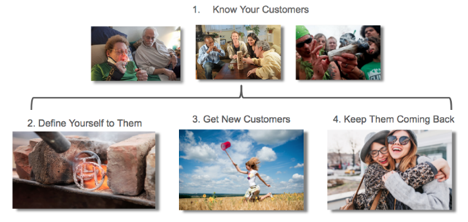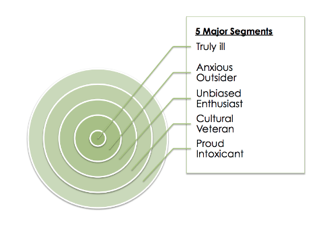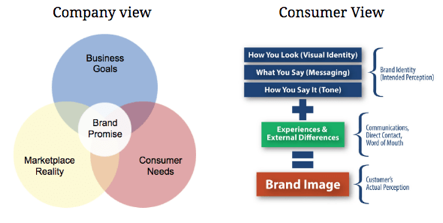Branding in the Age of Legal Cannabis
Marijuana Industry News November 30, 2020 MJ Shareholders 0

We recently worked with a large state-licensed cannabis grow and medical marijuana retail operation in Massachusetts to prepare for launching a dispensary for adult use sales of cannabis. We went in with great optimism due to our extensive knowledge and tenure marketing both cannabis and general consumer products and brands, including specific experience relating to retailing. An early medical cannabis license holder, the client was on the cusp of explosive growth with the launch of “recreational” cannabis sales legalization. A perfect situation for us as an agency looking to penetrate this new market.
A Dispensary Discounts the Power of Marketing
At first, what we heard was anything but optimistic, and was in fact quite discouraging. As in many states, supply was outstripping demand due to the slow moving Massachusetts Cannabis Control Commission in licensing new recreational dispensary locations, coupled with slim medical marijuana approved patient counts. The company’s reaction has been to de-prioritize marketing investment until they overcome their distribution challenges. Their brand is undifferentiated. They have inconsistent marketplace awareness. Competition is coming in fast. Price wars are being considered between competing dispensaries.
We believe they were putting themselves at risk by not investing more in marketing early, while they have a competitive advantage: as an early licensee, they owned a large swath of geography with little competition yet. Their grow operation was top-notch, and their team was in place and operating well. But their brand was generic and their plans for customer communication and interaction was disorganized.
With over 150 new adult-use stores seeking licences in MA and looking to open in this relatively small state, marketing is essential for growth and frankly, survival in what will prove to be a hyper-competitive retail market within the next few years. As other nearby states consider or launch adult-use retail themselves (ME, NJ, NY, CT, RI, VT, NH), the competition will only get fiercer as time goes on.
Your Cannabis Dispensary Needs A Smart Marketing Approach.
Based on this experience, we thought it might be helpful to share our insights with other cannabis operations. We hope you’re that professional and that this is meaningful to your strategic planning.
There are four key components to any smart marketing plan that every dispensary, retailer, grower or product manufacturer needs to take into account as they plan, build and grow their legal consumer-facing cannabis business. This blog post will focus on the first two components: Target Audience and Brand definition.
General Marketing Strategy Framework
I. It All Starts By Defining Your Target Audience
Target Audience? What the heck to you mean target audience? You mean, people who want to buy weed, right? Well, yes, but that’s just the beginning of the decision making you’ll need to undertake. For instance, we’ve identified at least 5 different broad categories of psychographic segments in the cannabis market place:
These groups, defined by their perception of cannabis and how it plays a role in their life, is only the beginning. Age, gender, income, proximity, consumption preferences, all play a role in determining how you should be marketing your consumer products. Consider the differences:
Truly Ill
VS
Unbiased Upscale Enthusiast
VS
Proud Intoxicant
Make sure that you do your homework regarding your patient and customer base. If you’re in an upscale suburban location, how would your strategy differ from a dense urban population center? Does your business philosophy tend towards helping the truly ill, or selling at your greatest volume potential with more recreationally focused consumers? How can you differentiate yourself in the market to attract just the kind of customer you want to grow? The answer to questions like these will help you determine key aspects of your overall business strategy. Premium or mass-appeal pricing? Medical/Health & Wellness or “Fun, Excitement and Pleasure”? Flower or infused products focus? Retail or Wholesale? The list is endless. But it all has to start with determining your priority customer segments and designing your business to suit their needs.
II. Your Brand Is Your Promise, Fulfilled (or not)
What is a brand? From your perspective as a business owner, it’s your promise. Your promise to your customers, your partners, your employees, and your community. How you define that promise and how you articulate it will help define your business for years to come. Choosing how to brand yourself, aligned with the target market you have strategically determined is your focus, is the most important “marketing” decision you will make as a cannabis business leader.
But it’s not just your promise. It’s also your perception from your customer perspective. Your position among your competitors. The expression of your business model. It’s what gives you competitive differentiation in a soon-to-be hyper-competitive product and retail space. Your brand is ultimately a summation of the customer’s experience with you directly. Pricing. Selection. Availability. Customer Service. Recognition.
What your brand will be most influenced by is your customer’s actual experience with your company. What’s their first experience getting to know you? Likely, it’s either a visit to your website combined with a visit to your store. What they experience in these interactions will form their views on your business and its ability to meet their needs.
Defining Your Cannabis Brand: Your view vs. The Customer
Only once you’ve chosen your target audience(s) and created your brand promise and matching customer experiences, you will be ready for today’s legal cannabis market.
MJ Shareholders
MJShareholders.com is the largest dedicated financial network and leading corporate communications firm serving the legal cannabis industry. Our network aims to connect public marijuana companies with these focused cannabis audiences across the US and Canada that are critical for growth: Short and long term cannabis investors Active funding sources Mainstream media Business leaders Cannabis consumers
















No comments so far.
Be first to leave comment below.